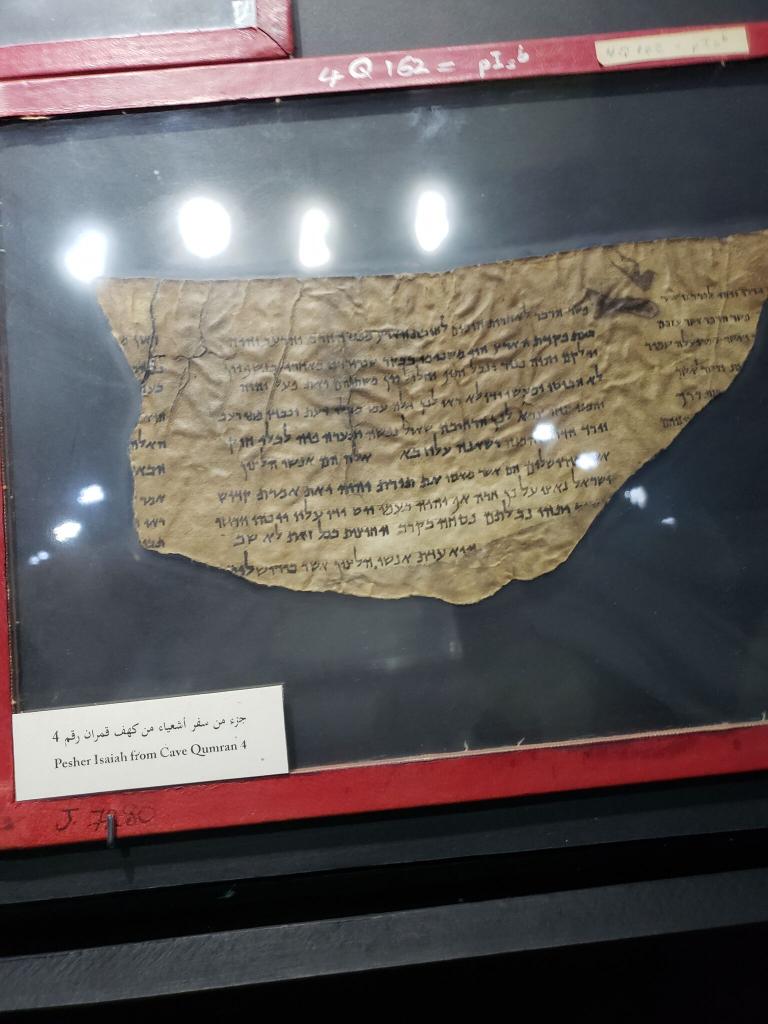Here’s an important qualifing post on carbon 14 dating…. from Larry Hurtado…
BW3
In an earlier posting in which I offered a review of Brent Nongbri’s new book, God’s Library (here), I noted that he gives a helpful introduction to what Carbon-14 dating comprises, and its limits. I also benefited earlier from a presentation by Josephine Dru given at a conference on manuscripts back in 2014 (which I reported on in a posting here).[1] More recently, she presented a poster on the topic at the 2017 manuSciences conference (here), and she has generously allowed me to re-use one of her illustrations from that presentation (here) to make a particular point.
The point to note is that, contrary to initial (and perhaps still some popular) assumptions, the potential exactness of Carbon-14 dating isn’t consistent across time. Instead, there are a number of what are referred to as “plateaus”, varying times (ranging from a few decades to a few centuries in length) when the level of Carbon-14 left over today remains fairly indistinguishable.[2] Dru kindly supplied me with a graphic showing these plataeus, as shown in the grey boxes in this graph (supplied by Dru, the bottom horizontal axis giving dates from ca. 100 BC to ca. 900 AD, and the Roman numerals representing centuries): C14-levels_for_I-BCE-to-IX-CE_IntCal13The import of this is that if a Carbon-14 test places the likely date of an object in one of these plateaus, the item’s date could fall anytime along that plateau.
Now it’s particularly interesting for the dating of earliest Christian manuscripts that one of those plateaus is the time-frame from approximately the 130s to the 220s CE (boxed in gray from centuries II to III on Dru’s graph). By contrast, there is a noticeable difference between C-14 remainder levels from the early I and early II centuries CE. This difference means that C-14 dating can usually distinguish between items from ca. 40 and 130 CE, but not between items from ca. 130 to 220 CE, even though it is the same time-span.
Another part of Dru’s presentation reported on C-14 tests for several manuscripts that had previously been dated palaeographically. These included three NT items, P.Oxyrhynchus 1780 (P39), P.Oxyrhynchus 1353 (Gregory-Aland 0206), the “Wyman fragment” (Gregory-Aland 0220), and a Septuagint manuscript, P.Bodmer XXIV (Rahlfs 2110). In all these cases, the C-14 tests produced most likely dates that were compatible with the palaeographically based dates. Dru estimates that C-14 results are compatible with palaeographical dates in roughly 80% of cases. This cuts both ways, affirming both palaeographical dates and C-14 testing in a high percentage of instances, but also indicating that there remain a smaller percentage of instances where the two approaches don’t agree. This could result from the method used in the palaeographical dating of those particular items, contamination of the sample used in C-14 testing, or other factors.
The bottom line is that C-14 testing can be useful when conducted with care. But C-14 testing can yield only an approximate date, as the case with palaeographical dating, and in some instances that approximate C-14 date can be frustratingly wide.
[1] Dru clarified in recent correspondence that, contrary to my earlier posting on her presentation in 2014, all of the literary manuscripts from the 2014 initiative were C-14 dated just once. (Discussion of multiple labs occurred only in the context of other initiatives and one internally dated documentary papyrus.) The subtitle of her forthcoming study thus asks “How Can a Single Radiocarbon Result Contribute to Dating a Manuscript?” My thanks to Dru for correcting this and for reading and advising on an initial draft of this blog-post.
[2] One of these plateaus is the 8th through 6th centuries BC. This means that C-14 testing can’t distinguish a more specific dating for items in this plateau period.

















